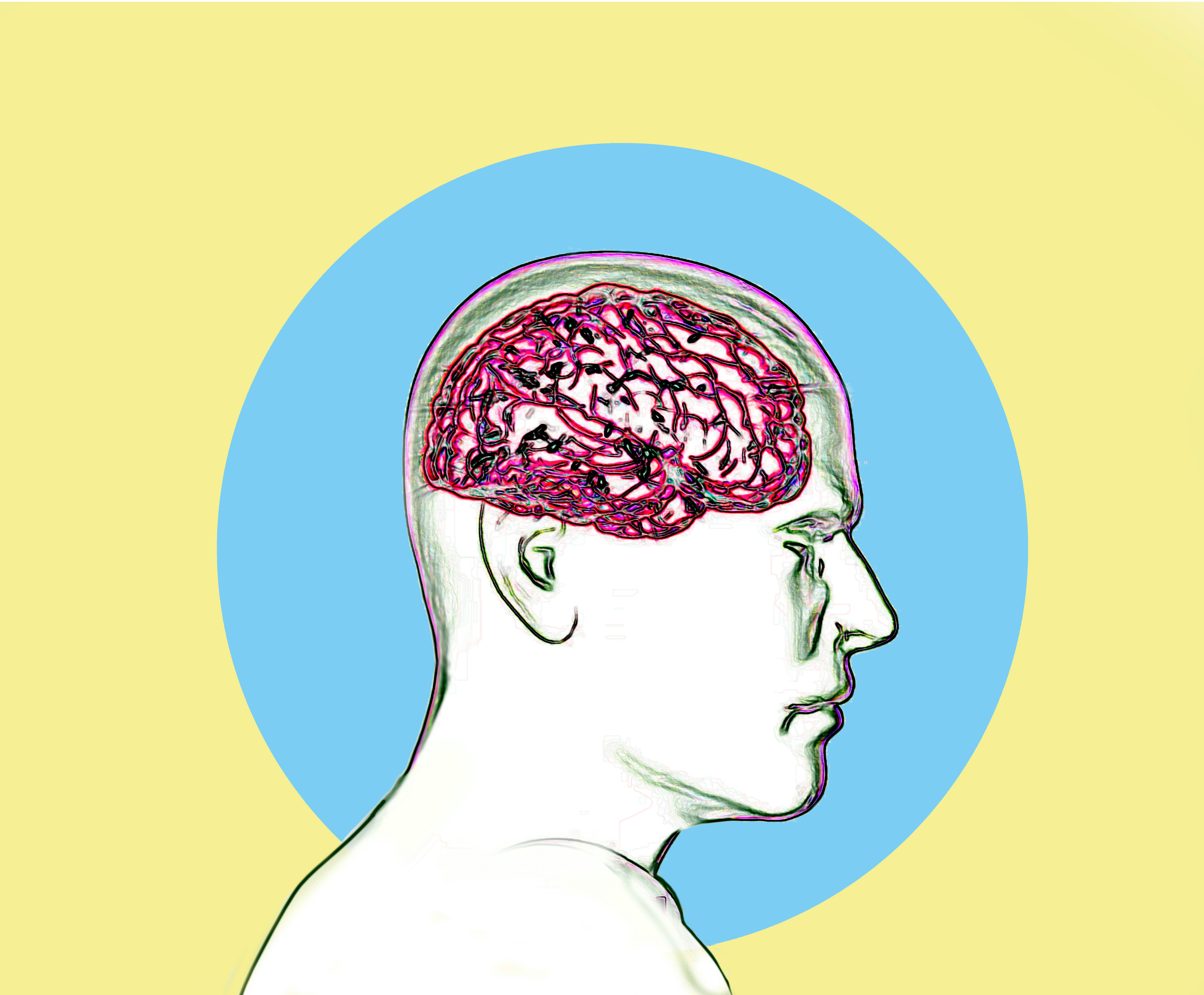
If this presidential cycle has unified us on anything, it might be that cognitive decline is a hard thing to talk about. Both President Biden and former President Trump face plenty of criticism, pundits playing armchair psychologists, and voter skepticism over their age and cognitive abilities. It seems at once fair game to ask about an impossible thing to answer. But cognitive researchers could have told you that.
If you look to science, you’ll find that cognitive aging is not a uniformly downhill slope that inevitably ends with something like dementia. And our understanding of cognitive aging is still incomplete. “This is really an emerging area of research,” says Ana Daugherty, a cognitive neuroscientist specializing in aging at Wayne State University. “There's just so much that we still don't know.”
What we do know is that there are many forms of cognitive decline and how it occurs is different for everyone. One person’s 50 might look a bit like another person’s 80 when it comes to working memory whereas it could be reversed when it comes to, say, problem-solving. “People are different,” Daugherty says. “It would be nice if it's a very straightforward process,” adds Jessica Damoiseaux, an associate professor in the Institute of Gerontology and the Department of Psychology at Wayne State University, “but it's just not like that.”
So, there are a lot of unknowns (no doubt fueling partisan bickering), but we do know an incredible amount about the brain and how it develops (and, shall we say, unravels) throughout life. A look at the brain’s broad growth shows just how complicated decline is, how much more we need to learn about it, and how imperative this knowledge is. After all, you too will in all likelihood one day be there.
Ages 0 to 18(ish): A time for florid growth

This is the only time when every part of the brain is on the up and up. Some structures, like the hippocampus, might finish forming by age 4 or 5, while others, like the frontal lobe, continue developing even into our mid-twenties, according to Daugherty. This is to say that humans don’t come out with fully formed brains at which time slowly chips away. Rather, we’re born still developing, and the effects of aging are yet to come. This is a time for florid growth.
“When we're first born, in early development, our brains are quite simple,” says Annalise Rahman-Filipiak, an assistant professor of psychiatry at the University of Michigan Medical School. “Over time, our cognitive abilities differentiate, so they become more specific.” This theory of cognitive development, she says, is called the differentiation and dedifferentiation hypotheses. During this time, processes and networks in the brain specify, strengthen, and solidify.
This doesn’t mean that every cognitive function is strong yet. This is an age where one is forming our first memories and banking first words. By 18 — which typically marks the beginning of adulthood in most Western countries — our brains haven’t even finished forming.
Ages 18(ish) to 35(ish): Peaking

During roughly this interval (remember, everyone is different!), some abilities first begin to peak.
“Our attention, our speed of thinking, our processing speed — those sorts of abilities tend to peak in quite early adulthood, twenties, maybe early thirties,” Rahman-Filipiak says.
The aging process of changes in the brain seems to start around 20 to 25, Daugherty says. But that doesn’t mean those changes will be apparent to you or those around you. She makes a distinction between changes measured in the lab and in daily life.
For example, working memory, which Daugherty says falls under the category of executive function, begins to weaken around age 25. She defines working memory as your ability to hold information in your mind, which might involve keeping lists, doing mental math, and accomplishing tasks with multiple steps. Again, this is a decline that can be measured in the lab but is less apparent in everyday life. It may manifest as forgetting where you put your keys.
With this peak comes a subtle downward slope that continues through middle age. “Beginning in your twenties and thirties, we see linear declines in all of these functions,” Daugherty says.
On the other hand, some parts of the brain are still baking. “Our frontal lobes really don't develop fully until our early 20s, particularly for males,” says Rahman-Filipiak. She says this chunk of the brain is crucial to reasoning, problem-solving, planning, and inhibition. This is why young people may be more prone to make errors in judgment, like taking a risky jump on a mountain bike or sending an ill-advised text. Rahman-Filipiak also notes how taking this development into account might inform certain rights, like drinking alcohol or purchasing a weapon.
But once this slope begins in parts of our cognition, it doesn’t crawl back up again, but rather continues throughout our lives. “I like to think that it's just like the slow trudge towards the grave,” Rahman-Filipiak says.
Ages 35(ish) - 55(ish): Habits matter

This period defines midlife, according to Daugherty. Decline steadily, imperceptibly continues.
The decline that we first see between age 20 and 30 continues, at the same rate, through age 40, she says. “So you're just adding up the same amounts of decline every single year, every single decade.” But while clinicians and researchers can measure these declines, they’re typically not noticeable in the average healthy person.
She continues that “somebody who is experiencing typical aging by midlife [is] likely going to be forgetting where they set items,” but not everything declines. Cognitive functions known as crystallized abilities continue to compound over time and stabilize late in life. For example, “your vocabulary continues to improve through age 30 to about age 50,” Daugherty says. “A typical person will have a better vocabulary when they're age 50 than they did when they were 20.”
Crystallized abilities also include street smarts, wisdom, interpersonal skills, and collective decision-making. However, impairments in other areas of cognitive function, such as memory and executive communication, can temper these gains. These other functions are known as fluid abilities.
This period is also unique because we seem to have the most control over how our habits influence our aging process. This is the point when risk factors, like high cholesterol or blood pressure, accumulate. While these are known risk factors for coronary artery disease, some recent studies have also found links between high cholesterol and blood pressure and cognitive decline. Additionally, other studies have found an association between coronary artery disease and cognitive decline.
Ages 55(ish) - 65(ish): Things are adding up

At this point, the decades of subtle decline are coming to a head. “All these domains, except for language, are actually declining linearly starting in your 20s and they're just adding up, adding up, adding up. And as we approach age 50, they then start to accelerate,” says Daugherty. “After age 50 is when we start to see the acceleration towards meaningful impairments.”
The weight of that accumulation makes the slope even steeper. “On average, people are going to accelerate their decline into the end of life from there.” But that’s not a sign that anything is wrong. It means we’re aging exactly as expected. “These are all typical healthy changes. These are not people who are experiencing Alzheimer's disease or other dementias.”
A function known as declarative memory, which Daugherty defines as the “when, what, where” facts, declines noticeably. “It is the most common age-related decline that we see that leads to the very stereotypical representation of memory issues in older age,” she says. “Most of those are declarative memory issues.”
Crystallized abilities, like wisdom and street smarts, continue to accumulate, too, which is what makes our elders such an asset.
Your crystallized abilities also butt heads with your declining fluid abilities. “You know more words when you're 50 than when you're 20, but your ability to access those words becomes harder. That tip-of-the-tongue phenomenon gets worse as we age, even though we know more words,” she says. Even if vocabulary is at an all-time high, the cognitive abilities involved in fishing for words have diminished. Still, difficulty retrieving words is different from forgetting words entirely, as might happen to someone with dementia.
Those other crystallized abilities, like wisdom and street smarts, continue to accumulate, too, which is what makes our elders such an asset. “Older adults actually have these superpowers,” Daugherty says. “But simultaneously are having impairments in their memory, executive function, and how fast they can think and communicate.”
Executive function is another fluid ability that declines, Daugherty says. That might manifest as the emergence of risky behaviors, but this time you’re probably not chancing a jump on your mountain bike. These risks are age-appropriate, so a failure in judgment will more likely appear as something like a financial risk.
Ages 65(ish) on up: The wildcard years

Here is where the dedifferentiation part of the differentiation-dedifferentiation hypothesis comes into play. “As we reach older age, we start to lose some of those specific networks, and all the abilities tend to meld together,” Rahman-Filipiak from the University of Michigan says.
At this point, cognitive abilities can vary enormously across humans. “Some individuals could already start showing some aging effects in their fifties, whereas, for others, their abilities are really high up until their seventies or even beyond,” says Damoiseaux from Wayne State.
Executive functioning continues to decline, which shows up when it comes to strategy and thinking ahead. “We'll hear our older adults complain of difficulty making decisions, difficulty managing their mail, those sorts of organizational and planning tasks,” Rahman-Filipiak says.
At age 65 and up, cognitive abilities can vary enormously across humans.
In the realm of memory, Rahman-Filipiak also notes something called episodic memory, which comprises specific past moments from our lives. She says around ages 65 and 75, our ability to create new episodic memories declines. There’s also a phenomenon called the temporal gradient of episodic memory. This gradient helps explain why someone in their 70s might be able to recall their seventh birthday party with perfect detail but not what they had for breakfast. “We do see this interesting gradient where memories that were kind of encoded many, many years ago are actually quite a bit easier for folks to remember than things that were encoded or learned more recently,” she says.
This gradient exists because a person has many opportunities to re-encode an early memory over a lifetime. This person probably recounted their seventh birthday party a few times over the years, allowing themselves to relearn it over and over.
Understanding the state of our brains over the decades could make it easier to understand why our aging politicians ramble or misspeak. That might not quell our worries about their capabilities as leaders, but it could help us understand what to expect.
Perhaps the most important thing to remember is to be kind to ourselves and each other as we age. None of us can help it, and while we have some control over how we age, it more often feels like a loss of control as well as many other capabilities that we’d perhaps taken for granted.
We could look at it as Rahman-Filipiak does, as a slow trudge toward the grave, or, as Daugherty puts it, “a mixed bag.”







